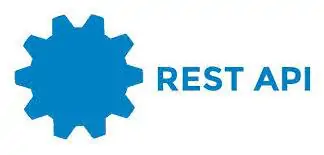
-Api(Application program interface)
-Send and receive data between computers
-You want to display google maps on your site, but the maps are on google server, you need a way to ask Google to provide you with the maps.
- Building and Architeching REST API is not Easy task, especially when you have to do it for legacy PHP project.
- Google to send you requested maps is thorugh an API provided by google that tells you which web address should you send request to get the data.
-REST(Representational State Transfer) is an API that defines a set of functions that programmers can use to send requests and receive response using the HTTp protocol methods such as GET and POST.
- Rest Api can be used by any site and appicantion no matter what language is written in because request are based on HTTP
Protocol.
-REST is a logical choice for building APIs that allow users to connect to, manage and interact with cloud services flexibly in a distributed environment.
-An API for a website is code that allows two software programs to communicate with each other.
-REST is not a Standerd. There will never be a standerds recommendation for Rest for Example. Rest Programming frameworks and 3rd party systems, working with REST is so simple that your organized can often create a custom solution with standerd liabrary features in languages like js,Javascript and C#/ASP.NET Web API.
There are 6 ground principles laid down by Dr.fielding who was the one to difine the REST API design in 2000.
1.Stateless
2.Client-server
3.Uniform interface
4. Cacheable
5.Layered System
6.Code on demand
- Each request from client to server must contain all of the information server to understand the request sent from the client.The server processes the request, a response is sent to the client through body, status or heders. Can be either a part of URl, query-string parameters,body, or even headers. URL used to uniquely identify resources & the body holds the state request resources.
-The probability across multiple platforms improve the scalability of the server components.Servers are not concerned with the user interface or user state so thst server can be simpler and more scalable. Server and clients may also be replace and developed independently, as log the interface is not altered.
- The Uniform interface throughout the application, REST the followed 4 interface constraints:
1. Manipulation of resources through representations
2. Self-descriptive messages
3. Identification of resources
4. Hypermidea as the engine of Application state
- If a response is cacheable, then a client cache is given the right to reuse that response data for later, equivalent requests. Better Performance, the Applications are often made cacheable.
- The Layered system architecture allows an application to be more stable by limiting component behavior.It enables load balncing and provides shared caches for promoting scalabilty.
- Optional constraint and is used least.Rest Allow client functionality to be extend by downloading and executing code in form of applets or script. Creating a smart application which does not rely on its own code structure.
- A large number of people wrongly relate resource methods to HTTP GET/PUT/POST/DELETE methods. When I say CRUD operations, I mean that we create a resource, read a resource, update a resource and delete a resource.
C -> Create -> POST
R -> Read -> GET
U -> Update -> PUT
D -> Delete -> DELETE
1.POST HTTP Method:
- Create new article on your blog, we should send request to remote server
2.GET Method:
- View single article or list of articles
3. PUT Method:
- Edit and existing articles
4.DELETE method:
-Delete data from remote server